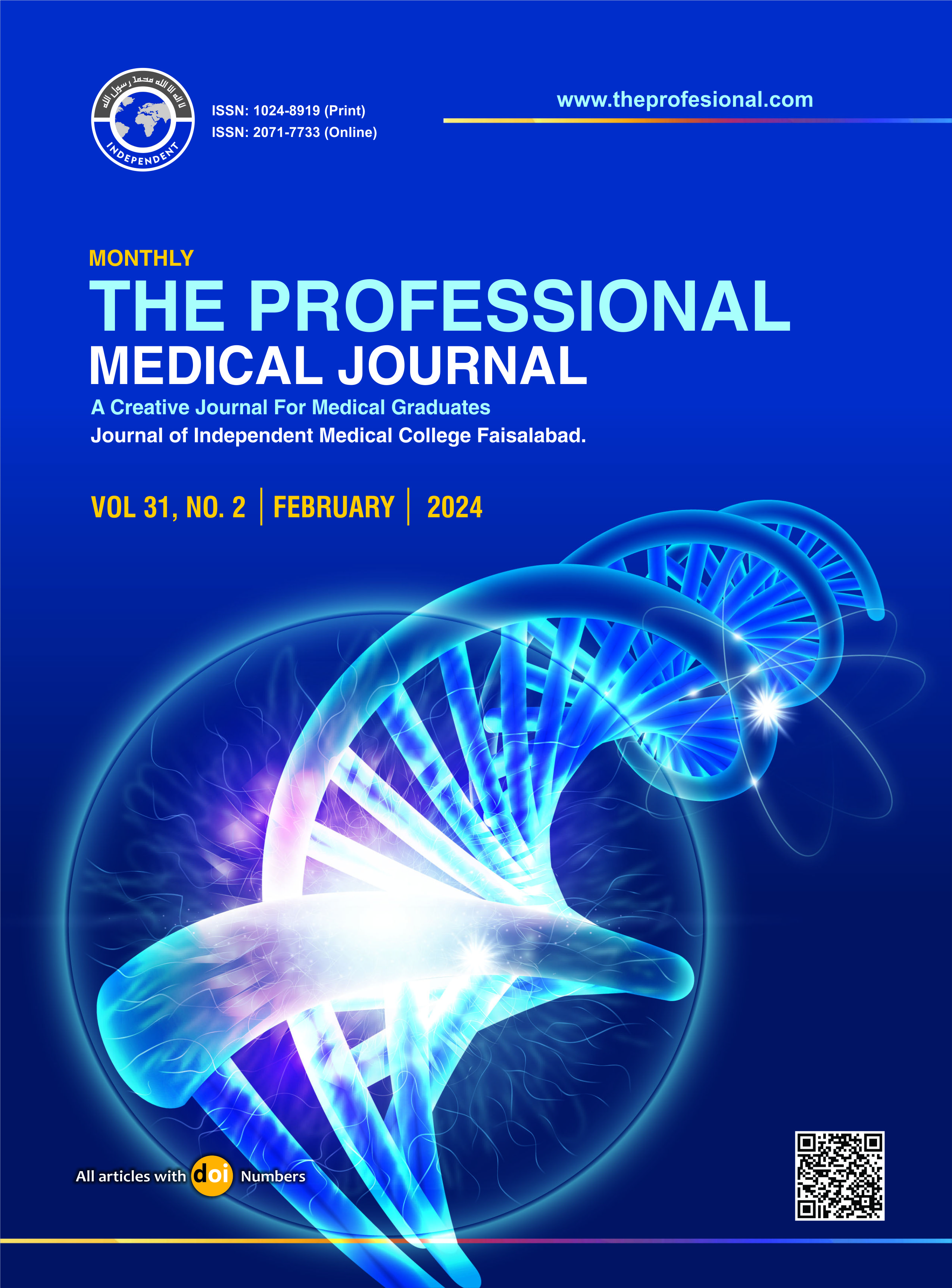Karydakis operation for pilonidal sinus disease in overweight and obese patients. A study of the efficacy of the procedure in 136 patients.
DOI:
https://doi.org/10.29309/TPMJ/2024.31.02.7951Keywords:
Karydakis Flap, Limberg Flap, Rhomboid ExcisionAbstract
Objective: To test the efficacy of the Karydakis procedure in overweight and obese patients and to check the recurrence rates in our patients. Study Design: Multicenter Prospective study. Setting: Sughra Shafi Medical Complex Narowal. Period: May 2011 to July 2021. Material & Methods: Total 146 patients were selected for this study a formal informed consent was taken. Ten patients were lost from follow up and excluded from study. Results: Out of remaining 136 patient 130 were male and only 6 were female. Mean age of the patient was 23 year and 5 months (range 16 years to 49 years). Thirty five patients had a single sinus in the midline, Seventy two had multiple sinuses in the midline, and 38 patients had lateral tract either on the right or on the left side in addition midline sinuses. Mean operating time was 39 minutes (range 23 – 70 minutes), mean blood loss was 26 ml (10 – 70ml) and mean hospital stay was 3 days (range 2- 7 days). There were a total of 21 (15 .05 %) complications. Seven(4.29) patients developed major wound infection requiring opening of the sutures and regular dressing till the wound became healthy to be closed by secondary suturing. Seven patients developed minor wound infection, 6 patients developed seroma and 3 patients had leakage of serous fluid from drain site for a couple of days. There were only 5 (3.67%) recurrences in mean follow up period of 23 months (range 11 months to 4 years). Two (1.47%) recurrence were observed in patient with BMI of below 35 and 3 recurrences (2.20%) were observed in patient with BMI of >35. All of them occurred in obese patient who could not maintain their personal hygiene according to advice given to them. Majority of the patient were satisfied with the procedure. Conclusion: We concluded that Karydakis operation has good outcome in overweight and obese patients. It addresses the etiological factors of the disease, is less time consuming as compared to other flap operation, is not associated with wound scar in the midline, can be easily performed by surgeons in training, is associated with minimum complications, has minimum recurrence rate on short and long term follow up, avoid the painful prolong dressing regimen and well accepted by the patients.
Downloads
Published
Issue
Section
License
Copyright (c) 2024 The Professional Medical Journal

This work is licensed under a Creative Commons Attribution-NonCommercial 4.0 International License.


